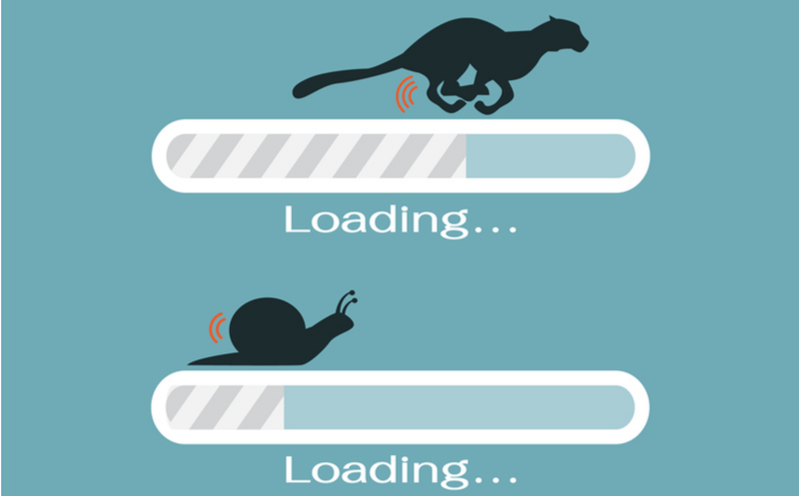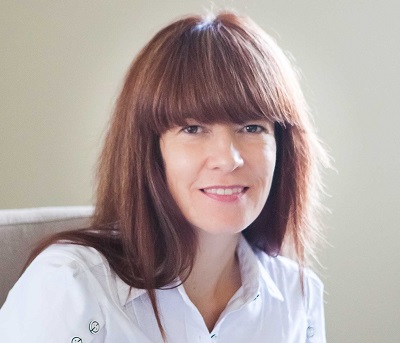In the software development world, a full-stack developer is the jack of all trades. Full-stack developers have the ability to code both the frontend and backend of an application. As you can imagine, these kinds of developers are valuable because of their versatility, and because of their ability to work on and understand multiple stages of the software development cycle.
That appreciation for full-stack developers is being reflected in the job market. Currently, there are almost 30,000 openings for full-stack developers in the United States alone. According to Indeed, the average salary in the field is a smidge above $100,000, making it one of the more lucrative roles in the field.
With high salaries and bright career prospects, landing a job as a full-stack developer isn’t easy, and your interview performance is critical. So in this post, we’re going to cover the full-stack developer interview questions along with the best ways to answer them.
General Full-Stack Developer Interview Questions & Answers
Introduce Yourself.
Recruiters ask this question to put candidates at ease. But they also want to see if you’re a good communicator, and see what aspects of your career you choose to highlight.
Give recruiters an idea of your past experience. Talk about what you studied in college, any full-stack web development courses you’ve taken, and your previous roles.
Then, explain why you’re interested in this job. This is your chance to show that you’ve researched the company. Explain how you can bring value to the organization, and how the role can help you achieve your professional goals.
What Is a Full-Stack Developer?
Recruiters ask this to gauge your familiarity with the role itself, rather than the company as a whole. A full-stack developer is someone who can code both client- and server-side applications. They use HTML, CSS, Javascript, Python, and Ruby on Rails to do this.
What Do You Know About Full-Stack Programming?
This might seem like a technical question but isn’t. Don’t use this as an opportunity to dive into everything you know about server-side development or the rules of effective user experience design.
What recruiters actually want to know is whether you understand the broad field of full-stack development and the basic roles and responsibilities of a full-stack developer.
So start by explaining what full-stack development is. Then, describe their responsibilities, which include:
- Converting business requirements into software specifications for new development projects
- Designing user experiences and interactions for software applications
- Designing graphic assets for new software products and building wireframes
- Building backend systems like databases, servers, and version control systems
- Generating strategies for optimizing the scalability, performance, and stability of software applications
What Is the Importance of a Full-Stack Developer?
This is an opportunity to demonstrate that you understand how full-stack developers fit into an organization and a team.
Start by explaining that full-stack developers have the rare ability to work on both the frontend and backend elements of software applications, which boosts productivity and efficiency.
Then describe how full-stack developers liaise between teams. Since they’re adept at different technologies and phases of software development, full-stack developers are able to easily communicate with front-end developers, backend developers, project managers, and IT managers.
Can You Share Something Interesting About Yourself?
This is a question that employers often use to break the ice with candidates. Use it to demonstrate a valuable soft skill, or a desirable professional trait.
At the same time, keep your answer fun. For example, you could talk about how you started off developing websites because you wanted to create a version of Facebook just for you and your friends. It’s totally fine if the story is a little quirky, but do keep it professional.
What Is Something You Like To Do Outside of Work?
This ice breaker is often used to determine whether you’d be a good fit for the organization’s culture.
Give an honest answer. Don’t exaggerate your volunteer experience or say that you want to backpack around the world if that’s not who you are. You can list more mundane things, like hanging out with your dog, if that’s what you really enjoy.
What Keeps You Motivated?

To prepare for this question, reflect on your own motivations, especially those related to previous projects and work experience. What gave you the greatest sense of accomplishment? What kind of experiences do you try to have again and again? Here are some of the things that commonly drive professionals:
- Working on big, important projects
- Helping a company outdo its targets
- Learning new things
- Collaborating with others in a team environment
- Mentoring younger developers
- Solving challenging problems
What Are Your Predominant Strengths?
When answering this question, list two or three core strengths. Then list an example of how you used that strength in a professional or real-world setting.
Here are some of the strengths that you can mention having as a full-stack developer:
- Critical thinking
- Analysis
- Detail-orientation
- Creativity
- Versatility
- Leadership
- Teamwork
What Are Your Weaknesses?
Your first impulse might be to say that you don’t have any weaknesses. Don’t do this, as it will give the impression that you lack self-awareness or humility.
Although difficult, you can talk about your weaknesses in a way that leaves a positive impression on the recruiter. First, talk about your weaknesses honestly. Here are a few things that might pop into your head:
- Taking on too many responsibilities
- Impatience in wanting to see a project through
- Getting nervous interacting with large groups of people
- Not knowing a specific programming language
- Feeling hesitant delegating tasks to other team members
Remember, you want to talk about these things without getting too negative. Let recruiters know how you identified this weakness, and what you’re doing to address it. Here are some sample answers:
“I realized at my first job that I have a hard time approaching other team members for help. I would take on a large amount of work because I was excited to contribute to the team. But I would run into issues and wouldn’t admit that I needed to consult more experienced team members to solve those problems.
I decided to talk to one of my managers about this. She let me know that the company encouraged younger developers to seek help from the more experienced ones and that everyone on the team enjoyed lending a helping hand. That put me at ease and I slowly began to turn to my colleagues for help when I needed it.”
Why Are You Leaving Your Current Company?
When answering this question, don’t throw your current company under the bus, because you don’t want to give the impression that you aren’t a team player.
Instead, focus on what you think your ideal workplace can offer. Maybe you want a change in industry or more responsibilities. Highlight those positives, and frame your desire to leave your previous company in those terms.
Here are some more reasons you can cite for wanting to leave your current job:
- Wanting more challenging work
- Wanting to relocate to a new city
- Uncertain or precarious job conditions at your previous company
- Wanting to move into a new industry
- Wanting a role that better positions you for your ideal career
Get To Know Other Software Engineering Students
Abdelkareem ElSharief
Software Engineer at Bread
Tetyana Ilyichova
Software Engineering Apprentice at Affirm
Alyssa Menes
Software Engineer at Progyny
Tell Me Something That Is Not on Your Resume.
This one can be a curveball, but recruiters usually just want some added information on your work experience or your abilities. Here are a few ways of answering this question:
What Attracted You To This Role
Although you should tailor your resume for each role that you’re applying for, you can add a bit more about what got you interested in that specific role. Explain where you came across the job posting, why it got you excited, and why you think that you are a perfect fit for the role.
An Instance Where You Went the Extra Mile

Recruiters love when candidates demonstrate initiative. So you can go into an instance in one of your previous jobs where you went above and beyond the responsibilities of your role. Maybe you took the initiative to optimize an application and wrote the code yourself, or established a mentoring program for junior developers and interns.
Talk About a Personal Quality That Matches a Job Requirement
Let’s say you’re applying for a full-stack developer job at a sports video analysis company and you’re passionate about sports. Mention that in your interview. Any hobbies or strengths that you have that are relevant to the job that you’re applying to can be worth mentioning in your answer to this question.
How Would Your Colleagues Describe You in Five Words?
Recruiters ask this to gauge your self-awareness. They also want to know if your personality traits match the requirements of the job you’re applying for.
Instead of getting carried away listing superlatives, do some introspection. What are your strengths? How do people perceive your contributions to the team? What do your key contributions in your previous jobs say about you?
Answering these questions can help you come up with words that your colleagues might use to describe you. You can also ask coworkers if you need help coming up with ideas. Remember to tailor your answer to the job description.
Do You Prefer To Work on Your Own, or as Part of a Team?

Recruiters want to know how their new hires like to work. This is even more relevant today as more companies are considering remote or hybrid work options for their employees.
You can start by listing the advantages and disadvantages of working independently and in a team environment. This shows that you understand both of these modalities well.
Then, honestly share your preference. Explain why that’s your preference. Maybe you prefer working in a team because interacting with others energizes you. Or perhaps you prefer working alone because it helps you focus
Before answering, consider whether the job description mentions that candidates need to be able to work in a particular way. For example, if the job description mentions that full-stack developers need to be able to work independently, then you can state that you have a preference for working that way.
What Are Your Professional Goals?
Hiring and training new employees can be expensive, so recruiters want to know whether your long-term professional goals are a good fit for that organization.
Divide your professional goals into short-term and long-term goals. Short-term goals can be things like using your newfangled Python skills or finding a more challenging work environment. You also want to include long-term goals, like becoming a more well-rounded full-stack developer or wanting to help a medium-sized company become a market leader.
Remember to tailor your answer based on the company that you’re applying to. Do some research on the company and determine what they’re looking for in their developers. Mention professional goals that match the needs of the company.
Where Do You See Yourself in Five Years?

This is another question that provides recruiters with information about a candidate’s fit. Based on how you answer this question, they will be able to determine whether you’ll stick around for five years (which they want) and if your goals align with what the company can offer its employees.
To answer this question, clarify your goals. So take some time to think about your career, what you want to achieve, and what new experiences you want to have professionally.
Once you’ve done that, you can create parallels between the job description and your career goals. For example, let’s say you want to improve as a front-end developer. A job that mentions skills in HTML, CSS, and Javascript is a good fit for this.
What Programming Languages Are You Comfortable Working With?
Since you’re applying for a full-stack developer job, make sure that you name both front-end and server-side programming languages. And make sure that the languages you name correspond with the ones that you’ve listed on your resume.
What Is Your Favorite Language and Why?
Recruiters ask this to ascertain whether you actually enjoy software development. So deliver your answer in a way that reflects your passion for the field.
Maybe you love the intuitiveness of Python syntax, or maybe you really enjoy creating front-end animations using Javascript. If that’s the case, then you can dive right into explaining why you enjoy a particular programming language.
If you don’t have a ready answer, spend time thinking about the projects you’ve worked on and the languages that you are most comfortable with.
What’s the Most Recent Thing That You Have Learned?
Your answer doesn’t necessarily need to be the most recent thing you learned about full-stack development. It can also be something that you recently learned from a software development project.
If you go this route, contextualize the project and your role within it. If you don’t have any experience yet, you can talk about any personal projects that you’ve created. Explain what led to you discovering something new, and how you went about studying it in greater detail.
Make sure that you answer this question by detailing something practical. You don’t want to tell a recruiter that you learned the definition of a theoretical concept or the syntax of a function. Since you’re applying for a full-stack developer role, recruiters want to know that you can take theoretical concepts and employ them in building software.
What Are the Most Important Qualities That a Full-Stack Developer Must Have?
Here are the most important qualities that a full-stack developer should possess:
- Problem-solving skills
- Creativity
- Time management
- Attention to detail
- Collaboration
- Technical prowess
Which Technologies and Languages Would You Need To Develop a Project From Scratch?
The following are the technologies that full-stack developers require to build a project from scratch:
Frontend Development
- HTML
- CSS
- Javascript
Backend Development
- Java
- Python
- PHP
- Ruby
Database Management
- MySQL
- SQLite
- Oracle
- Microsoft Access
Technology Stacks
- LAMP
- Django
- MEAN
- MERN
How Do You Keep Yourself Updated About the New Trends in the Industry?

Recruiters like to know that candidates take the time to stay abreast of developments in the space. Here are a few ways that you can do that:
Websites
Software Development Forums
Podcasts
Can You List Some Recent Full-Stack Development Trends?
Everything that you’ve learned from the resources listed in the previous question will help you answer this question. Here are some examples of full-stack development trends in 2022:
- Low-code development software
- Mixed reality software
- Blockchain projects
What Is the Most Challenging Project You’ve Encountered on Your Learning Journey?
There are a few things that you should mention when answering this question.
Project Details
Contextualize the project and explain its goals. Detail the problem you were trying to solve, the size of the team, and so on.
Your Role
What was your role in the project? Describe what specific aspects of it you were tasked with building.
The Tech Stack
List the specific programming languages and tools that the team used in the project.
The Challenges
Then talk about the specific challenges that you faced during the project. What made it tough? What kind of problems did you run into? Talk about those things in detail.
Problem-Solving Approaches
Finally, describe how you solved those problems. Let’s say you were working on a website development project and the team had an issue connecting the database to the website. You can describe how you reviewed the scripts and identified their faults to solve the problem at hand.
Situational Question Based on the Resume.

Here are examples of questions that might arise based on things that stand out on your resume.
Why Did You Move Into Backend Development?
This is a question you might get asked if you started off as a front-end developer, and then decided to study backend development. Tell the recruiter how you made that choice. It could be something as simple as wanting to work on something new, or a situation at work that required you to learn backend development.
You Don’t Know X Language. Are You Willing To Learn It?
Recruiters don’t expect candidates to know every coding language. But you might be required to learn a new one for this job. Tell the recruiter that you’re willing to learn it independently. You can also mention instances where you learned a programming language on your own using either books or online courses.
Junior Full-Stack Developer Interview Questions
Tell Us About Your Favorite Project. What Did You Learn?
Since you’re a junior developer, you probably don’t have too many work projects to talk about. So it’s fair to mention any of your own personal projects. Describe the goals of the project and the programming languages and tools you used to achieve them.
What Experience Do You Have as a Full-Stack Developer?
Recruiters want to know what programming languages you’ve learned thus far, and what skills you have, to see if you’re a good fit. Mention each major project that you’ve worked on and the role that you played for your team.
What Do You Do When You Notice a Colleague Made a Coding Error?
Recruiters ask this question to ascertain whether or not you’re a collaborative and communicative team player.
The best way to deal with a coding error is to mention it to your colleague in a polite manner. If the two of you disagree, offer to have a more senior colleague make the decision. Most importantly, remain congenial and don’t let the conversation devolve into an argument.
How Do You Code When SEO Is a Priority?

Spend some time working through SEO guides for developers so that you’re aware of search engine-friendly code and can explain this to recruiters.
Tell Us About a Time When You Debugged a Challenging Program.
When recruiters ask this question, they’re looking to find out if you have the discipline to debug code. You can demonstrate this by talking about a specific project which started off with erroneous code or malfunctioning features. Then, explain how you identified the code and debugged it.
How Has Your Experience Prepared You for This Position?
The key to answering this question is to be familiar with the role and the company. What is the company trying to achieve in the short term? What does the job description say they’re looking for in a full-stack developer?
Once you know this, you can cherry-pick instances from your past which demonstrate that you’re the right person for this role. Let’s say a company is looking for a full-stack developer who has e-commerce experience. If you’ve worked with e-commerce tools or transactional software, cite this as evidence that you’re suited for the position you’re applying for.
In What Ways Has Your Education Prepared You for This Role?
Answer this question by talking about the classes you’ve taken that are relevant to the full-stack developer role. That includes classes that go over aspects of computer science, math, programming languages, and digital design.
Do You Have Any Technical Certifications?
Certifications are a great way to learn new skills and distinguish yourself. You can also highlight any capstone projects that you built as part of your certification.
How Do You Manage Multiple Projects at the Same Time?
Multitasking is an important skill for full-stack developers because your diverse skills might translate to working on multiple projects that are in different phases of the development cycle.
Here are a few ways to manage multiple projects happening simultaneously:
- Plan your work before you start
- Prioritize tasks from different projects
- Work only on one thing at a time
- Communicate with your manager if you’re facing any challenges
What Coding Have You Completed Outside of Work?
Personal projects evince your interest in building applications from end to end. You can mention any projects that you’ve built and the languages that you used to complete them.
You can also mention contributions that you’ve made to open source projects. There are a few different ways you can get involved in open-source projects and can include them in your portfolio.
What’s the Difference Between a Full-Stack Engineer and a Full-Stack Developer?
The term full-stack developer usually refers to those who work on both the frontend and backend of web applications. Full-stack engineers, on the other hand, build software applications across devices and platforms.
What Is the Biggest Mistake You Made in Any of Your Projects? How Did You Rectify It?
Recruiters want to see that you have the ability to admit your mistakes and rectify them. So don’t forget to mention how you went about making amends.
Here are a few things you can do to rectify the mistakes you make at work:
- Review all the code you produce
- Let a manager know if you’ve committed any major errors
- Ask a more senior colleague to supervise your corrections
- Admit when you make a mistake and ask for help if you need it
How Do You Select the Tools and Technologies You’ll Use for a Project?

A good full-stack developer can find the right tools for the problem at hand. They do this by:
- Studying the project requirements thoroughly
- Researching similar projects and looking at the tech stack they used
- Taking stock of the compatibility requirements
- Looking at the pricing structure of any paid tools that you might be considering using in the project and determining whether they fit the budget
- Selecting the languages that will help you solve the hardest problems of the project the most easily
What Was Your Best Implementation Experience to Date?
This is your chance to show off a bit. Every full-stack developer has those projects where everything goes smoothly. You can describe one of those instances and reflect upon what you learned.
What Was the First Programming Language You Learned?
This is a question about your journey into the world of programming. You can start your answer by describing how you got interested in programming in the first place. Then explain why you chose to learn a specific language and how you went about studying it. You get extra points if you’re able to show that you took some initiative to study it on your own rather than just learning it in a classroom setting.
How Would You Optimize an Existing Website for a New Client?
Here are a few ways to optimize an existing website:
- Reduce the number of HTTP requests that the site makes
- Ensure data is being cached whenever possible
- Minimize the number of redirects being made
- Use tools to compress high-volume data like images
- Optimize the interactions between the database and servers
Senior Full-Stack Developer Questions
What Is the Difference Between Thread and Process?
A program that is under execution is known as a process. A thread is a segment of a process carrying out a specific task within it.
Can You Share an Experience When You Found Your Colleagues’ Code To Be Inefficient? How Did You Deal With It?
This question is an opportunity to show that you have good interpersonal skills. Start by describing a situation where you found that there was code that could have been written better or optimized.
Then, explain how addressed the issue with your colleague. Clarify that you didn’t throw your colleague under the bus for their mistake, but that you instead raised the issue in a respectful manner.
Are You Aware of Design Patterns? Are You Comfortable Working With Them?
A design pattern is a method of solving a common problem in software design. Think of it as a template solution for problems that developers have been running into for a long time.
Here are a few examples of design patterns that you can study:
Creational Design Patterns
- Abstract factory
- Object pool
- Singleton
Structural Design Patterns
- Private class data
- Flyweight
- Bridge
What Is Your Best Example of Implementing or Debugging a Program?
You can answer this question by recounting a project that you built that displayed one or more of the characteristics of good software implementations:
- Usability
- Reliability
- Accuracy
- Robustness
- Correctness
Do You Enjoy Management or Execution More?

Answer this question honestly so that recruiters know whether you’re interested in a management role. Some full-stack developers just want to program and that’s fine.
What’s the Difference Between Abstract and Interface Classes?
Abstract classes give you the ability to implement functionality through subclasses. But with an interface class, you can only state the functionality and not implement it. Read more about abstract and interface classes.
How Can You Prevent a Bot From Scraping a Publicly Accessible API?
Here are a few ways to prevent data from being scraped by bots:
- Limit the rate at which individual IP addresses can make requests
- Require users to log in to access content
- Use media objects to embed content
- Protect access to your content with a CAPTCHA
What Is a RESTful API?
A RESTful API is one that adheres to the architectural constraints of the representational state transfer style. Read more about RESTful APIs.
What Is a Callback in JavaScript?
In Javascript, a callback is a function that is passed as an argument for a different function.
What Do You Mean by Data Attributes?
A data attribute is a descriptor of a data object. Read more about data attributes.
What’s the Difference Between “Resetting” and “Normalizing” CSS?
Resetting removes all of the default stylings that browsers apply to the elements on a page. Normalizing doesn’t remove all of the defaults; it maintains the more useful ones. Read more about resetting and normalizing.
What Does ACID Mean in Database Systems?
ACID refers to the properties that transactions in a database should exhibit. It stands for atomicity, consistency, isolation, and durability.
How Is Rolling Deployment Different From Blue-Green Deployment?
A blue-green deployment strategy employs two environments, one known as blue and the other as green. The quality assurance processes and testing are done in the blue environment while traffic is directed to the green environment.
Rolling deployments don’t have different staging environments. They simply deploy updates to running instances as and when required.
Read more about different deployment strategies.
What Are the Differences Between Server-Side Scripting and Client-Side Scripting?
Here are the differences between server-side scripting and client-side scripting:
- Server-side scripting involves writing the code that will work in the backend and not be seen by the users of the applications. Client-side scripting is the writing of code that will influence what users see.
- Server-side scripting requires interactions with the server being used for an application. The client-side description doesn’t involve interactions with the server.
- Server-side scripting is used to improve how server resources are used. Client-side scripting can improve user experiences and the aesthetic appearance of applications.
- HTML, CSS, and Javascript are common client-side scripting languages. ASP.NET, Java, and PHP are common server-side scripting languages.
What Are the Types of Design Patterns?
There are three types of design patterns: creational, structural, and behavioral. Read more about the characteristics of different design patterns.
What’s the Difference Between Normalization and Denormalization?
Normalization is a method of reducing data redundancy by separating data into multiple tables. Denormalization is the opposite process, where data is consolidated into one table so that it is easier to retrieve. Read more about the normalization and denormalization of database tables.
Technical Full-Stack Developer Questions
What Is Pair Programming?

Pair programming is a relatively new software development technique. The practice involves two programmers assuming roles known as driver and navigator. The driver is the person writing the code while the navigator observes each line for correctness.
There are a few different ways that programmers are paired during a pair programming sprint. That includes:
- Expert-expert: Usually done on more complex projects where two experts can work together to boost each other’s productivity.
- Beginner-beginner: Programmers who are early in their career might not be able to handle projects on their own and are therefore paired with someone with whom they can bounce ideas and write code.
- Expert-newbie: This pairing is done so that the younger programmers in the team can spend time observing and learning from the more experienced developers.
What Is CORS?
CORS stands for Cross-Origin Resource Sharing. It is a way for a server to authorize resources to be loaded from the ports and domains of other servers. Read more about how CORS is used here.
What Is Dependency Injection?
Dependency injection is a design pattern that aims to free a class from its dependencies by separating the instantiation of an object from the way that it is used in a program. Read more about dependency injection.
What Are the Main Differences Between GraphQL and REST?
Here are the main differences between GraphQL and REST:
- REST is an architectural style that places a set of constraints on how web applications are built. GraphQL is a server-side technology used to obtain data by executing queries.
- REST is executed using a series of endpoints whereas GraphQL takes the form of a schema.
- GraphQL mutations need to be in the string message format. There are no restrictions on the message format for REST mutations.
List Some Common Ways To Reduce the Load Time of a Web Application.

The following are the most common ways to reduce the load time of web applications:
- Compress the images on your web app
- Move the stylesheet references to the top of the HTML page
- Place script references at the bottom of the HTML page
- Put your Javascript and CSS code in files outside the main HTML document
- Reduce the number of HTTP requests and 301 redirects
What Is Multithreading? How Is It Used?
Multithreading is the practice of breaking down a process into multiple threads. Each of these threads runs independently but makes use of the same system resources.
Explain Inversion of Control.
Inversion of control is a design principle based on which classes are coupled in a loose manner, which makes them easier to maintain. Read more about inversion control.
What Factors Do You Need for Successful Integration?
Below are the main factors that determine whether an integration happens successfully:
- Data quality
- Extent of customization
- Consolidation of approaches
- Future-proofing
- Support of top management.
How Would You Locate a Memory Leak?
You can use the following techniques to locate a memory leak:
- Memory profilers
- Heap dumps
- Verbose garbage collection
Read more about memory leaks.
What Is Long Polling?
Long polling is a method by which a server can channel data to a client even if the client has not made a request for that data. Read more about long polling.
What Is an Application Server?
An application server is a machine on which you can host software applications. Read more about application servers.
What Tools Would You Use To Test Your Code’s Functionality?
Below is a list of tools that you can use to test code functionality:
- Selenium
- WebDriverIO
- Chai
- Karma
- Jasmine
- Mocha
- Nightwatch
What Is the Observer Pattern?
An observer pattern is a design pattern that’s used when the objects under consideration exist in one-to-many relationships. It’s used so that when one object is updated, then all of the objects that depend on it are automatically updated. Read more about observer patterns.
Do You Prefer AMD or CommonJS? Why?
There’s no wrong answer to this question, but you should be ready to explain your preference. Read about the advantages of AMD and CommonJS.
How and When Would You Clear Floats in CSS?
You can apply the “clear” property to elements when you want to correct floated elements. You can clear a float in three ways: left, right, and both.
Let’s say you want to clear the float that has been applied to header elements. You would type out the following CSS code to achieve that:
header {
clear: both;
}
Can You Share Code Between Files? If So, Then How?
Sharing code between files can expedite your development process. Here are some tools you can do that:
- Bit
- NPM libraries
- Multi-package repositories
Read more about sharing code between files.
What Are the Advantages of Using Unit Tests?
The following are the advantages of unit tests in software development:
- Unit testing improves code quality
- Refactoring code is easier when you unit test
- It makes it easier to debug code
- Unit testing makes documentation available to programmers working on the projects
- Because it makes debugging easier, unit testing reduces to cost of a project
How Should You Prepare for a Full-Stack Developer Interview?
Here are a few things that you can do to prepare for a full-stack developer interview:
The Basics
You need to have a good theoretical understanding of all of the basic aspects of full-stack development. That includes computer science topics like algorithms and data structures; networking concepts such as protocols and TCP/IP models; and operations systems.
Programming Languages
If you’re early in your career, then you need to be proficient with at least one programming language. You should know all of the conceptual underpinnings and demonstrate that you’ve worked on projects using that language. If you’re looking to diversify your portfolio, add an additional language to your repertoire.
Testing and Debugging
These are aspects of full-stack development that a lot of candidates overlook. If you want to land a job with a top software company, then you need to know automation testing and be efficient at debugging code. You will most likely be tested on the latter using sample code.
Communication Skills
A lot of your success in full-stack development interviews will come down to your ability to communicate well. It’s one thing to know a lot about programming, web services, and databases, but a whole another to be able to describe their finer details effectively. So make sure that you work on your communication skills along with the technical ones.
FAQs About Full-Stack Developer Interviews
Are Full-Stack Developer Interviews Hard?
Full-stack developer interviews are not hard as long as your technical skills are up to par. That means working hard to master one programming language and studying algorithms, data structures, databases, and networking concepts.
How Long Should You Prepare for a Developer Interview?
If you’re new to full-stack development, you should give yourself a couple of months to prepare. This will give you the opportunity to study everything that you need to and create your resume and portfolio.
How Long Are Full-Stack Developer Interviews?
This depends on the stage of the interview process. The earlier interviews are shorter. They tend to get longer, about an hour each, the further you’re into the hiring process.
How Hard Is It To Become a Full-Stack Developer?
Becoming a full-stack developer is harder than choosing between backend and frontend development. The best way to become a full-stack developer is to study one first, then learn the other.
Since you’re here…
No one wakes up knowing how to code – they learn how to code. Tens of thousands of students have successfully learned with our courses, like our Software Engineering Bootcamp. If you’re a total newbie, our Software Engineering Career Track Prep Course will be a perfect fit. Let’s do this!
![84 Full Stack Developer Interview Questions [2022 Prep Guide]](https://www.springboard.com/blog/wp-content/uploads/2022/05/84-full-stack-developer-interview-questions-2022-prep-guide.png)



![How to Land an Entry-level Software Engineering Job [7 Options]](https://www.springboard.com/blog/wp-content/uploads/2022/09/software-engineering-feaured-image.png)

